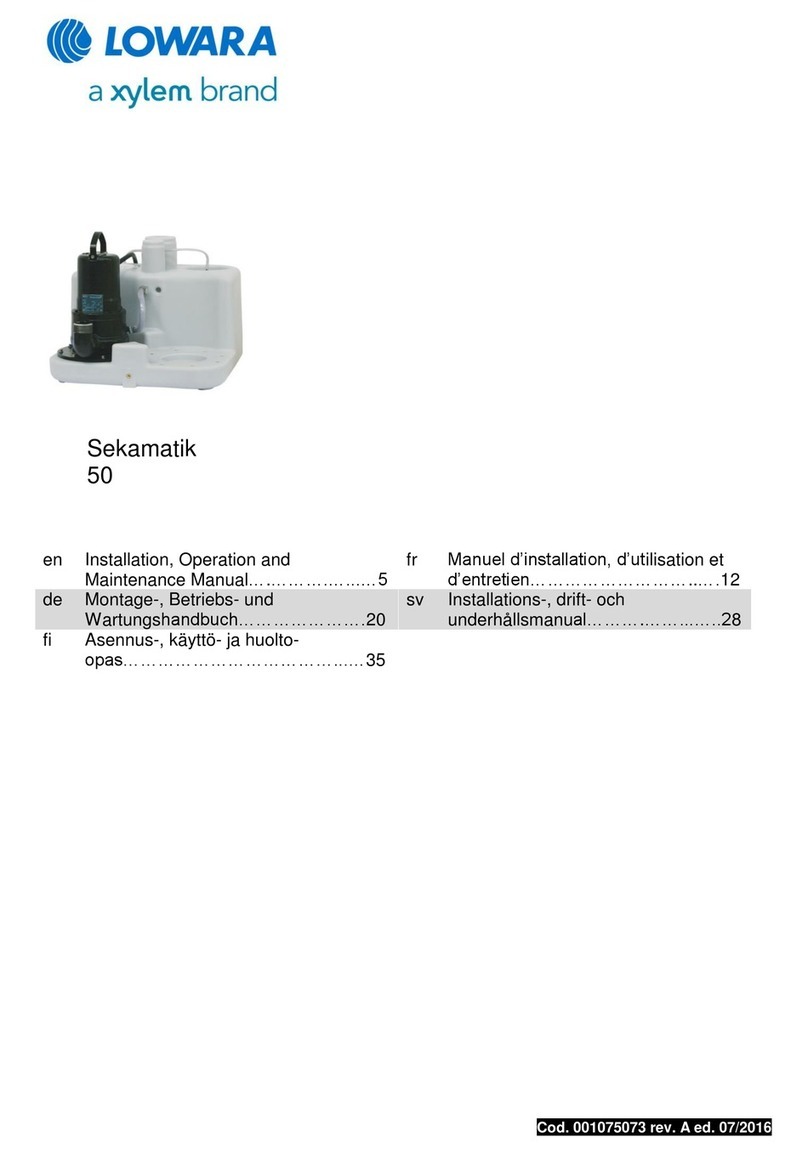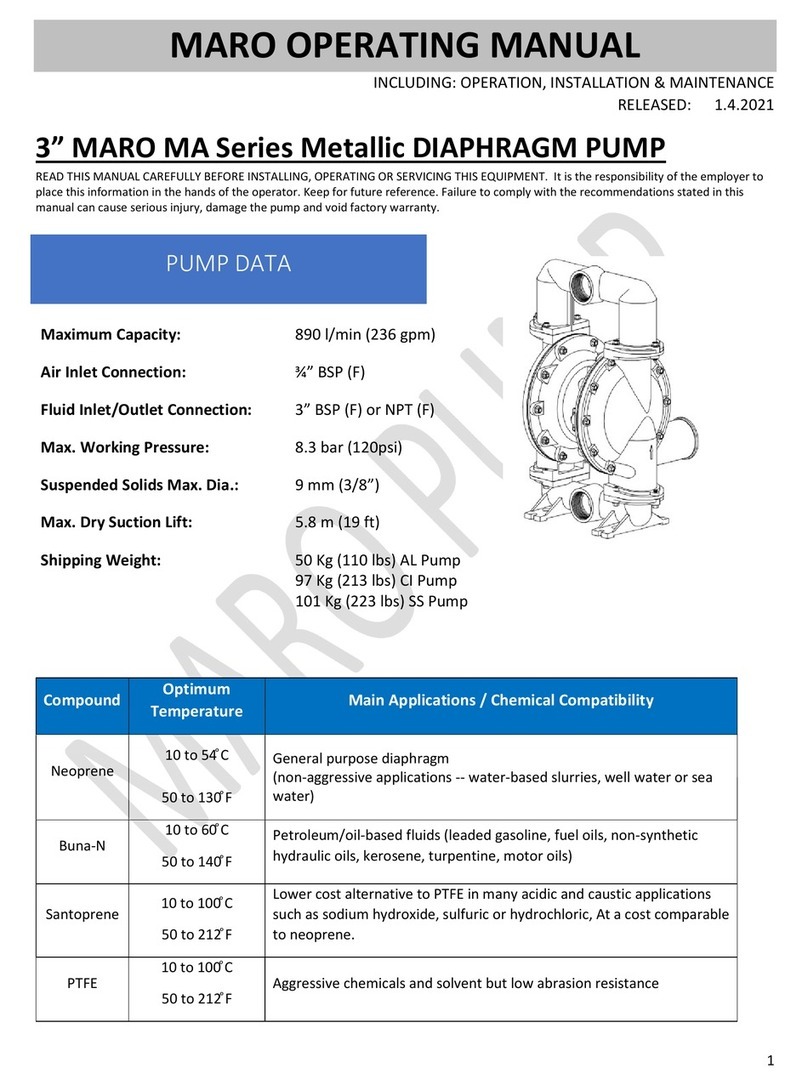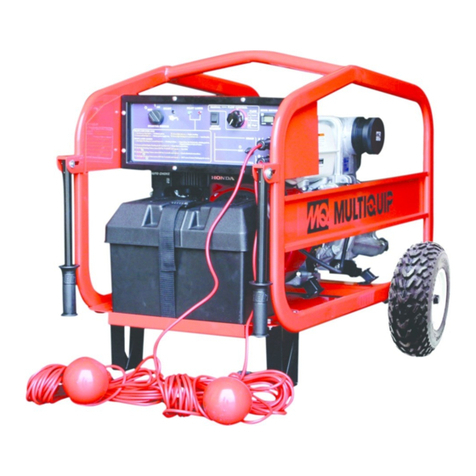Geo-Flo NP Series Installation guide

www.geo-o.com
NP Base Non-Pressurized Flow Centers
Installaon, Operang, and Maintenance Manual
Geo-Flo Corporaon
905 Williams Park Drive
Bedford, Indiana 47421, U.S.A.
Main Number: 812-275-8513
Toll Free: 800-784-8069
Fax: 888-477-8829

THIS PAGE INTENTIONALLY LEFT BLANK

NPBSeriesNon-PressurizedFlowCenters
Table of Contents
General Descripon . . . . . . . . . . . . . 1
Available Flow Center Models . . . . . . . . 2
Flow Center Pump Sizing. . . . . . . . . . . 5
Installaon . . . . . . . . . . . . . . . . 6
Flushing and Purging . . . . . . . . . . . . 8
Start Up . . . . . . . . . . . . . . . . . .13
Maintenance. . . . . . . . . . . . . . . .15
Pump High Voltage Wiring . . . . . . . . . .17
Oponal Pressure Relief Piping . . . . . . . .18
Troubleshoong . . . . . . . . . . . . . .19
NOTES:
This guide provides the installer with instrucons specic to NP Base Flow Centers. Please refer to your
heat pump manufacturer’s instrucons or CSA/ANSI/IGSHPA guidelines for addional detailed ushing,
purging, and installaon informaon. Please review the enre IOM document before proceeding with
the installaon.
Geo-Flo Corporaon is connually working to improve its products. As a result, the design and
specicaons of products in this catalog may change without noce and may not be as described
herein. For the most up-to-date informaon, please visit our website, or contact our Customer Service
Department. Statements and other informaon contained in this document are not express warranes
and do not form the basis of any bargain between the pares, but are merely Geo-Flo’s opinion or
commendaon of its products.

General Descripon
The NP Series is a family of non-pressurized ow centers used for
closed-loop geothermal (ground source) heat pump systems. The
NP Series ow centers ulize a water column to provide the neces-
sary sucon head for the circulator pump, and to ensure a ooded
pump volute. Each NP Series ow center consists of a uid reservoir
(tank), ush and/or service/isolaon valves, and one or more pumps
housed in a foam-insulated cabinet. The valves included in each NP
ow center varies within the family of products. Review the follow-
ing secon on “Available NP Flow Center Models” for more informa-
on. Every NP ow center includes a sealing cap to ensure a closed
system and provides vacuum relief to prevent the reservoir from
dropping below atmospheric pressure when the loop expands (dur-
ing cooling season). A pressure relief valve prevents the reservoir
from being over-pressurized when the loop contracts (during heang
season). Since the NP reservoir can hold pressure, the air space at
the top funcons like an expansion tank in pressurized systems. The
NP reservoir provides an air separaon funcon due to the size of
the tank and design of the return piping.
1 | Installaon, Operang, and Maintenance Manual
Figure 1 shows the uid ow to and from the NP Base ow center. The uid is pumped from the ow center’s
tank on the le side, travels up through the sucon side isolaon valve, through the pump(s), and out the dis-
charge isolaon valve . The uid returns from the ground loop through the top right tank isolaon valve and is
directed to the tank where any air present in the uid is released.
Figure 1: Generalized uid ow
(components inside cabinet)
Out: From
Flow Center
to Heat Pump
In: From
Ground Loop
to Flow Center
To tank
From tank

Available Models
The NP Series of ow centers are available in several
models to meet the requirements of the specic instal-
laon and contractor preference. The following is a
brief descripon of each NP product. Note that each NP
product has a specic installaon manual. This manual
focuses on the NP Base. Consult the manuals for each
specic NP for further informaon.
NP Base (NPB) Flow Center:
The NP Base is a cost compeve model designed for
single geothermal heat pump installaons (one heat
pump on a dedicated ground loop) where the contrac-
tor chooses to install external ush valves, or chooses to
ulize internal headers (i.e. all loop circuits are brought
into the mechanical room). The NPB includes isolaon
valves on the pump sucon and discharge, and an isola-
on valve on the return. Field connecons to the NPB
are 1” NPT.
NP Flow Center:
The standard NP Flow Center is the original NP oering
and includes Geo-Flo’s Flo-Link double O-ring technology.
The NP is designed for single geothermal heat pump
installaons. The NP includes 3-way, 4-posion ushing
and isolaon valves that allow the contractor to ush the
heat pump and ground loop without addional valves or
plumbing. This NP may also be used with internal head-
ers. The 3-way valve on the sucon side of the pump(s)
can also be ulized to ll and drain the tank. The NP
Flow Center does not ship with any ngs. Hose kits are
available for installaon ease and exibility.
NPB Series Non-Pressurized Flow Centers | 2
Figure 2: NPB
Figure 3: Standard NP

NP Plus (NPP) Flow Center
The NP Plus has the same features as the NP but also includes an
external 3-way ushing/purging valve, and a set of Flo-Link X 1-1/4”
HDPE socket fusion ground loop adapters (Figures 4 and 5). This ad-
dional external 3-way valve allows the ground loop to be ushed
separately from the heat pump. Since the ground loop adapters
are included, a hose kit or a set of Flo-Link double O-ring adapters
are all that is required for connecon to the heat pump. The NP is
designed for single geothermal heat pump installaons.
NP Dual Circuit (NPD) Flow Center
The NPD has the same features as the NP and NPP but is designed
for installaons where two geothermal heat pumps share the same
ground loop. All 3-way valves are built into the NPD. Check valves
are included in the product to prevent the need to install external
check valves on each pump circuit. Hose kits are available for instal-
laon ease and exibility.
Figure 5: NPP
Figure 4: NPP with hose kit
Figure 6: NPD
3 | Installaon, Operang, and Maintenance Manual

NP Mul Circuit (NPM) Flow Center
The NPM is a family of mul-circuit non-pressurized ow centers that are used for two or more geothermal
heat pumps sharing the same ground loop. Since there are large number of available opons for the NPM,
please consult our website or the NPM literature for detailed descripons.
NPB Series Non-Pressurized Flow Centers | 4
Figure 7: NPM with circulators for each heat pump
Figure 8: NPM with central variable speed pump and zone valves for each heat pump

Flow (U.S. GPM) [l/s]
Grundfos Pump Performance Curves (Single Pump)
Head (Feet) [kPa]
UP26-116 UPS26-99 high spd UPS26-99 med spd UPS26-99 low spd
[0.13 0.25 0.38 0.50 0.63 0.76 0.88 1.00 1.14 1.26 1.39 1.51 1.64 1.77 1.89 2.02 2.15 2.27]
[14.9]
[29.8]
[44.8]
[59.7]
[74.6]
[89.5]
[104.5]
[119.4]
Flow (U.S. GPM) [l/s]
Grundfos Pump Performance Curves (Two Pumps)
Head (Feet) [kPa]
2 UP26-116 2UPS26-99 high spd 2 UPS26-99 med spd 2 UPS26-99 low spd
[0.13 0.25 0.38 0.50 0.63 0.76 0.88 1.00 1.14 1.26 1.39 1.51 1.64 1.77 1.89 2.02 2.15 2.27]
[29.8]
[59.7]
[89.5]
[119.4]
[149.3]
[179.1]
[208.9]
[238.8]
5 | Installaon, Operang, and Maintenance Manual
Flow Center sizing:
Performance curves
The specic NP Series ow center should be selected based on the system pressure drop (including the geo-
thermal heat pump, ground loop piping, and interior piping). Calculators to assist with pressure drop deter-
minaon and pump selecon are available at www.geo-o.com/calculators. The ow center selected should
provide at least the minimum amount of ow recommended by the heat pump manufacturer for the heat
pump selected.
NOTE: The NP Base (NPB) is currently oered with UPS26-99 and UP26-116 pumps only. NP, NPP, NPD, and
NPM ow centers have addional pump opons.

NPB Series Non-Pressurized Flow Centers | 6
Installaon
Mounng the unit
The NP Series ow center must be mounted on a level surface
near the ground source heat pump. The unit can be placed on
the oor or on an isolaon pad such as a small piece of expanded
polystyrene (blue board insulaon) or a high-density rubber equip-
ment pad. Since the cabinet is plasc and will not rust, an isolaon
pad is not required for a thermal break but may be used if desired.
An-p brackets and hardware are included and can be used if
deemed necessary for the installaon locaon. If these brackets
are used, several methods of aachment can be ulized. Figures
9a, 9b, and 9c show these methods. Note that if you chose to
mount the NP to a concrete oor, the concrete anchors must be
eld provided.
Figure 9c:
Figure 9b:
Figure 9a: An-p brackets (two included)
mounted on top sides of ow center
An-p brackets mounted on
boom of ow center
An-p brackets mounted on top
of ow center
Plumbing Opons
The NPB Series ow center can be plumbed with a wide variety
of materials including HDPE, PVC, copper, PEX, and exible hose
to provide many opons to the installer. The ow direcons to
and from the ow center are shown in Figure 10. The installer can
choose to direct the uid ow from the pump(s) to the geother-
mal heat pump out the top or the front of the ow center. The
included isolaon valve should be installed in the chosen direc-
on, and the included 1” plug should be installed in the unused
port. The brass swivel half-union ngs use a at gasket and
should be torqued hand-ght plus 1/8 to 1/4 turn onto the valves
and plug. Over torquing may cause the joint to leak. If the joint
drips at start-up, snug with channel locks unl the drip stops.
Figure 11 shows a standard installaon when the ground loop
headers are external to the building. Insulated 3-way ush valves
are available, or the installer may choose to install six ball valves
for ushing the loop and heat pump. Figure 12 shows an installa-
on where each loop circuit is brought into the mechanical room
and headered.
To HP
Opon 2
To HP
Opon 1
From
Loop
Figure 10: Flow Direcon

7 | Installaon, Operang, and Maintenance Manual
Figure 11: Plumbing diagram- external headers
Figure 12: Plumbing diagram- internal headers
Plumbing Opons: External Headers
Plumbing Opons: Internal Headers

NPB Series Non-Pressurized Flow Centers | 8
Flushing and Purging
Flushing with NPB Series Flow Center (Outside and Inside Headers)
NOTICE: Using a quality ush cart is the fastest and easiest way to ensure that all air and debris is removed
from the ground loop. The ush cart must be able to provide a minimum uid velocity of 2 /s through all pip-
ing, provide ltering, and allow power ushing. It is extremely common for construcon debris, polyethylene
pipe shavings, dirt, sand, rocks, etc. to enter the ground loop piping during installaon. The wet rotor circulator
pump(s) used during system operaon require clean, debris-free uid to funcon properly. A small amount of
debris in the ground loop could become lodged between the pump’s rotor and housing causing pump failure a
few days to a few years aer inial installaon. This preventable issue is a common mode of failure for circula-
tors. Although the NP Series ow centers do have the ability to separate air from the loop uid, its pumps are
not powerful enough to guarantee that all air and debris can be ushed from every type of loop during the
inial loop installaon. Geo-Flo recommends ushing all ground loops with a quality ush cart to ensure that
the loop is free of air and debris when the loop installaon contractor leaves the job site.
Flushing with Flush Cart -- Outside Header / Using External 3-Way Valve
CAUTION: NEVER DEAD-HEAD THE FLUSH CART PUMP INTO THE FLUID RESERVOIR OF THE NP
SERIES RESERVOIR TANK. NEVER ATTEMPT TO FLUSH THROUGH THE TANK USING A FLUSH
CART PUMP. OVER-PRESSURIZATION OF THE FLUID RESERVOIR COULD BE DANGEROUS AND
WILL VOID THE WARRANTY.
Figure 13: Flushing external headers

9 | Installaon, Operang, and Maintenance Manual
NOTE: For detailed ushing and purging informaon, refer to the Flush Cart Operaon Manual for the cart
being used. Geo-Flo provides detailed instrucons on operang the ush cart manufactured by Geo-Flo.
1. Close all three isolaon valves on the NPB.
2. Remove the cap from the NPB tank. This step is precauonary and intended to protect the ow center from
accidental over-pressurizaon. If the operator places the valves in the incorrect orientaon and starts the
ush cart, the uid from the ush cart will quickly ll and overow the NP tank.
3. Aach the ush cart hoses to the ush ports on the 3-way valves or ush ports on valve assembly.
4. Direct the uid toward the ground loop by rotang the three- way valves.
NOTE: Fluid should not enter the NPB tank during ushing. If it does, immediately stop the ush cart pump
and check to be sure the valves are in the correct orientaon.
WARNING: ONLY USE PREMIXED ANTIFREEZE IN A NON-FLAMMABLE STATE. FAILURE TO
OBSERVE SAFETY PRECAUTIONS MAY RESULT IN FIRE, INJURY, OR DEATH.
5. Flush/purge the ground loop using a high quality ush cart (see Figure 13). Add anfreeze as required.
6. Turn o ush cart. DO NOT PRESSURIZE GROUND LOOP.
7. Disconnect the ush cart hose from the right side of the ow center, and reconnect it to the le side as
shown below in Figure 14.
Figure 14: Flushing external headers- heat pump side
Discharge
Iso.
Valve
Sucon
Iso.
Valve

NPB Series Non-Pressurized Flow Centers | 10
8. Open the pump discharge isolaon valve on the NPB and ush the heat pump piping with the ush cart
(ensure sucon isolaon valve is closed). Note that you should start with the ush cart dead-head/return
valve closed due to the high ow rate. Open this valve slowly to purge air from the heat pump and associ-
ated piping.
9. Slowly open the sucon side isolaon valve on the NPB (boom le valve). This will allow uid to ll the
NPB reservoir with clean, debris free loop uid. The tank should be lled to about 1”-2” below the boom
of the tank’s neck. Figure 15 shows a cross secon of the NP ow center indicang the approximate uid
Figure 15: Fluid level of the NP tank
(shading)
Return pipe
Tank neck
1 to 2”
level. Close the discharge isolaon valve.
10. Turn o the ush cart. DO NOT PRESSURIZE the NPB. Close the
NPB discharge isolaon valve.
11. Disconnect the ush cart hose and replace the 1” plug on the
NPB.
12. Proceed to Start Up secon of IOM.

11 | Installaon, Operang, and Maintenance Manual
CLOSECLOSE
FLUID SUPPLYFLUID SUPPLY
1. Wire the circulator pump(s) to a control switch to allow the pump to be powered on and o as needed dur-
ing the ushing process (see Figure 21).
2. Remove the cap from the NPB tank.
3. Close the NPB sucon side isolaon valve (lower le side) and heat pump isolaon valves (if present) to
direct uid ow to the loop circuits.
4. Close all loop circuit valves except Circuit 1.
5. Aach supply hose to the NPB.
6. Direct uid into Circuit #1 unl uid returns to the NPB tank.
Many contractors employ non-pressurized ow centers and internal headers to ush the ground loop when a
ush cart is not available. Ball valves must be installed on each circuit to allow the ow center pump to ush
one circuit at a me. Not all loops may be ushed in this manner, especially those with larger than 3/4” PE
circuit piping. The contractor is responsible for ensuring that the NPB pumps can achieve the 2 feet/second
velocity required to purge air from the loop.
WARNING: OPEN THE MAIN POWER SUPPLY DISCONNECT SWITCH AND SECURE IT IN AN OPEN
POSITION PRIOR TO PERFORMING ELECTRICAL WORK. VERIFY THAT POWER HAS BEEN DISCON-
NECTED PRIOR TO WIRING THE PUMP(S). FAILING TO SECURE THE ELECTRICAL SUPPLY COULD
RESULT IN SERIOUS INJURY OR DEATH.
Figure 16: Flushing internal headers
Flushing with Inside Headers

NPB Series Non-Pressurized Flow Centers | 12
7. Close Circuit #1 and repeat for the remaining circuits.
8. Aer the nal circuit has been lled open the bypass valves to allow the heat pump piping to ll.
9. Close the NPB discharge valve and open the NPB sucon valve. Allow uid to push through the pumps and
ll the tank.
10. When the tank is lled with a few inches of the top, close the NPB sucon valve (lower le) while leaving
the supply uid on. This will pressurize the pump stack only.
11. Open the vent screw in the center of the UP(S)26 series pump motor with a large at head screwdriver al-
lowing a few drops of uid to drip out. Then, reghten the vent screw. Turn o the uid supply.
NOTE: Step #11 is crical. Opening the vent screw and allowing uid to drip out ensures that all trapped
air has exited the pump motor. Skipping this important step could lead to premature pump failure.
12. Remove the supply hose from the NPB and replace the 1” plug. Place the hose into the top of the NPB.
13. Open Circuit #1 isolaon valves (all others should be closed).
14. Close the NPB return valve and open the NPB sucon valve.
15. Energize the pump(s). Slowly open the NPB return valve This allows uid from the tank to be pumped to
the loop circuit. Air will be discharged into the tank as it is pushed from the loop. Monitor the uid level in
the tank and open the supply to add addional uid as needed to prevent the tank from being completely
emped.
NOTE: The pump(s) may push uid much more quickly than can be supplied by most domesc water
supply sources. Therefore, it is possible for the tank to empty very quickly. Use the NPB return valve
to balance the uid level in the tank with the uid supply. Once the uid level in the tank is stable, the
supply can be shut o and the return valve should be fully opened.
16. When the uid level in tank remains constant, close the supply and open the NPB return valve fully. This
directs the full uid ow to the loop circuit.
NOTE: Any air in the loop is compressed when the pump(s) is running. Therefore, if air is in the loop and the
pump is de-energized the air will expand pushing uid back into the tank which can cause it to overow. The
pump should only be de-energized when the loop circuit is completely purged of air.
17. Close the Circuit #1 ball valve and de-energize the pump(s).
18. Repeat steps 7 through 17 to purge each individual circuit and the heat pump.

13 | Installaon, Operang, and Maintenance Manual
19. Aer each circuit has been ushed individually, open all circuits and allow the pump(s) to run at full speed.
Dead-head the pump by closing the NPB return valve while monitoring the uid level in the tank to be sure
all air has been purged. If the uid level drops more than one to two inches, air remains in the loop and
purging must connue. Repeat steps 7 through 17 as needed.
Note: The dead-head process can be completed on each individual circuit.
20. De-energize the pump. The uid in the tank should only rise slightly. If the tank overows there is air in the
loop and purging must connue. It may be necessary to repeat the process of isolang and purging each
individual circuit.
21. Add anfreeze to the loop, if necessary.
22. Proceed to Start Up secon of this document.
Start-Up
1. Rotate NPB ow center valves to the correct operang posions.
2. Open the vent screw in the center of the pump motor with a large at head screwdriver allowing a few
drops of uid to drip out. Then, reghten the vent screw.
NOTE: Opening the vent screw and allowing uid to drip out ensures that all trapped air has exited the pump
motor. Skipping this important step could lead to premature pump failure.
3. Start ow center pump(s) and allow system to operate for several minutes. Remove tank’s cap and check
uid level adding addional loop uid, if necessary, while pump(s) are running. Fluid should be about 2”
below the boom of the tank’s neck as shown in Figure 15. Replace the cap and ghten unl there is an
audible “click” similar to an automobile’s gas cap.
4. Measure and record the ow rate using one of the methods described in the following secon of this
document. If using a NPB1A or NPB2A with three speed pumps, the ow can be adjusted by changing the
pump(s) speed. The ow rate should be within the range suggested by the heat pump manufacturer.
5. Verify the performance of the heat pump per the manufacturer’s literature by calculang the heat of
extracon and/or rejecon (HE-HR). The Geo-Flo website has a free calculator to assist in this calculaon.
Go to www.geo-o.com, select Design Calculators then HE-HR Calculator. The HE-HR should be within the
range specied by the heat pump manufacturer.
6. Geo-Flo recommends removing NPB isolaon valve handles to prevent accidental actuaon, and prevent
condensaon formaon.

Valve Open
Valve
Closed
From
Loop
NPB Series Non-Pressurized Flow Centers | 14
Measuring System Flow Rate
The system ow rate can be determined using two dierent methods as
described below.
Method 1: Flow rate from pressure drop
1. Measure the pressure drop across the heat pump’s heat exchanger via
the PT ports located at the water connecons of the unit (Figure 17).
Use a single large dial face pressure gauge to allow for more precise
measurement.
2. Determine the ow rate using the manufacturer’s published tables for
pressure drop versus ow (Figure 18). If the pressure drop is o the
manufacturer’s chart, the ow rate can be determined using a free on-
line calculator available on Geo-Flo’s website. Go to www.geo-o.com,
select Design Calculators then Flow Rate Calculator.
Method 2: Direct measurement using a Geo-Meter
NOTE: This method requires an addional eld installed tee assembly on
the return side of the NPB.
1. Aach the Geo-Meter to the tee assembly using a Flo-Link double O-ring
x 1” CAM ng and direct the exible hose into the top of the tank
(Figure 19).
2. Energize the pump(s).
3. Close the NPB return valve. This directs the uid through the Geo-Meter.
Be sure the Geo-Meter is vercal.
4. Read the ow rate*.
Figure 17: Measuring
pressure drop
WPD
PSI FT
3.0 0.9 2.2
4.5 1.8 4.2
6.0 2.9 6.8
3.0 0.9 2.1
4.5 1.7 4.0
6.0 2.8 6.6
3.0 0.9 2.0
4.5 1.7 3.9
6.0 2.8 6.4
3.0 0.9 2.0
4.5 1.6 3.8
6.0 2.7 6.2
20
EWT
°F Flow gpm
50
40
30
Figure 18: Example of heat
pump manufacturer’s table of
pressure drop versus ow rate
Example Only
Figure 19: Measuring with Geo-Meter
*Note: Flow meter is
calibrated for pure water.
Anfreeze mixtures have
dierent densies and will
impact the reading

15 | Installaon, Operang, and Maintenance Manual
Maintenance
There is no regularly scheduled maintenance required for the NP Series ow center. However, the uid level
in the tank should be monitored, parcularly during the rst several days aer installaon or service has been
performed.
Replacing Circulator Pump
WARNING: OPEN THE MAIN POWER SUPPLY DISCONNECT SWITCH AND SECURE IT IN AN OPEN
POSITION PRIOR TO PERFORMING ELECTRICAL WORK. VERIFY THAT POWER HAS BEEN DISCON-
NECTED PRIOR TO WIRING THE PUMP(S). FAILING TO SECURE THE ELECTRICAL SUPPLY COULD
RESULT IN SERIOUS INJURY OR DEATH.
1. Determine whether the circulator pump needs to be replaced. The pump motor should only be replaced af-
ter successfully troubleshoong the system and determining that the pump is not funconing. See Trouble-
shoong secon of this document for more informaon.
2. Close the NPB sucon and discharge valves.
3. Verify that power has been disconnected from the circulator pump(s) using a mulmeter.
4. Disconnect wiring from pump.
NOTE: Use a towel to catch the small amount of uid that exits the pump stack during motor removal.
5. Remove screws holding pump motor to pump housing (volute), and remove the pump motor.
6. Inspect the pump motor and volute for signs that indicate the mode of failure. For example, if debris is
present in the pump or volute the ground loop should be re-ushed with a quality ush cart equipped with
a lter.
7. Clean the pump seat on the pump housing (volute) with a cloth to remove any debris so that the gasket on
the pump will seal properly. Install the new pump motor and reconnect wiring.
8. Fill the tank as needed.
9. Open the NPB discharge and sucon valves. Remove the 1” plug on the unused discharge port. This allows
air to escape upward and allows uid to ll the pump stack. Replace the 1” plug when the uid has lled
the stack.
10. Open the vent screw in the center of the pump motor just installed with a large at head screwdriver allow-
ing a few drops of uid to drip out. Then, reghten the vent screw.

NPB Series Non-Pressurized Flow Centers | 16
NOTE: This step is crical. Opening the vent screw and allowing uid to drip out ensures that all trapped air
has exited the pump motor. Skipping this important step could lead to premature pump failure.
11. Energize the pump.
12. Verify system performance by checking the ow rate and temperature dierenal, and comparing the
values to the heat pump manufacturer’s published data. If installing a UPS26-99, be sure to set the pump
speed that provides a ow rate within the manufacturer’s recommend range.
13. Remove the tank’s cap and check the uid level. Fluid should be about 2” below the boom of the tank’s
neck as shown in Figure 15. Replace the cap and ghten unl there is an audible “click” similar to an auto-
mobile’s gas cap.
Converng NPB1 to NPB2
Follow procedure for Replacing Circulator Pump except remove the blank plate instead of the pump motor. Be
sure to remove the gasket (Figure 20).
Checking an-freeze/freeze protecon level
The loop uid may contain anfreeze at concentraon high enough to achieve a freeze protecon level that is
generally 10 degrees lower than the lowest expected entering uid temperature (EWT) to the heat pump. An-
freeze will be used when the loop uid entering the heat pump (EWT) is expected to drop below 40 degrees F.
The freeze protecon level depends on the type and concentraon of anfreeze.
Gasket
Figure 20: Removing cover plate
Cover Plate
Rubber Cover
Loop uid can be removed from the NPB ow center through one of
the three way valves (if installed) or through the top of the tank. The
specic gravity of the uid can then be measured with an appropri-
ate specic gravity hydrometer. The specic gravity is used to deter-
mine the percentage concentraon of anfreeze which is then used
to determine the freeze protecon level. The Residenal Pressure
Drop calculator available at www.geo-o.com provides informaon
on percent anfreeze, freeze protecon level, and specic gravity for
ethanol, methanol, and propylene glycol.

17 | Installaon, Operang, and Maintenance Manual
Pump High Voltage Wiring
WARNING: OPEN THE MAIN POWER SUPPLY DISCONNECT SWITCH AND SECURE IT IN AN OPEN
POSITION PRIOR TO PERFORMING ELECTRICAL WORK. VERIFY THAT POWER HAS BEEN DISCON-
NECTED PRIOR TO WIRING THE PUMP(S). FAILING TO SECURE THE ELECTRICAL SUPPLY COULD
RESULT IN SERIOUS INJURY OR DEATH.
Wire the circulator pump(s) to the heat pump as shown in Figure 21 (constant speed pumps). Follow all electri-
cal and local codes for wiring and fuse/breaker sizing.
From heat pump #1
fused/circuit breaker
protected pump
connections
N
L
Ground
L2
L1
N
L
Wiring for
NPD3and NPD4
(2nd pump on
LH side)
N
L
N
L
Wiring for
NPD4 (2nd pump
on RH side)
From heat pump #2
fused/circuit breaker
protected pump
connections
Pump #3 Pump #4
Pump #1 Pump #2
Capacitor
Speed Switch
Terminal Strip
Ground
L2
L1
From heat pump
fused/circuit breaker
protected pump
connections
Ground
L2
L1 N
L
N
L
Pump #2
Pump #1
Speed Switch
Terminal Strip
From heat pump #1
fused/circuit breaker
protected pump
connections
Ground
L2
L1
Wiring for
NPD3and NPD4
(2nd pump on
LH side)
L2
L1
L2
L1
L2
L1
L2
L1
Wiring for
NPD4 (2nd pump
on RH side)
From heat pump #2
fused/circuit breaker
protected pump
connections
Pump #3 Pump #4
Pump #1 Pump #2
Capacitor
Ground
L2
L1
L2
L1
Figure 21: Pump eld wiring. Top picture shows UPS26-99
control box; boom picture shows UP26-116 control box.
Table of contents
Other Geo-Flo Water Pump manuals
Popular Water Pump manuals by other brands

ARVEN
ARVEN TURBO-LG operating instructions

GORMAN-RUPP PUMPS
GORMAN-RUPP PUMPS 10 Series Installation, operation, and maintenance manual with parts list
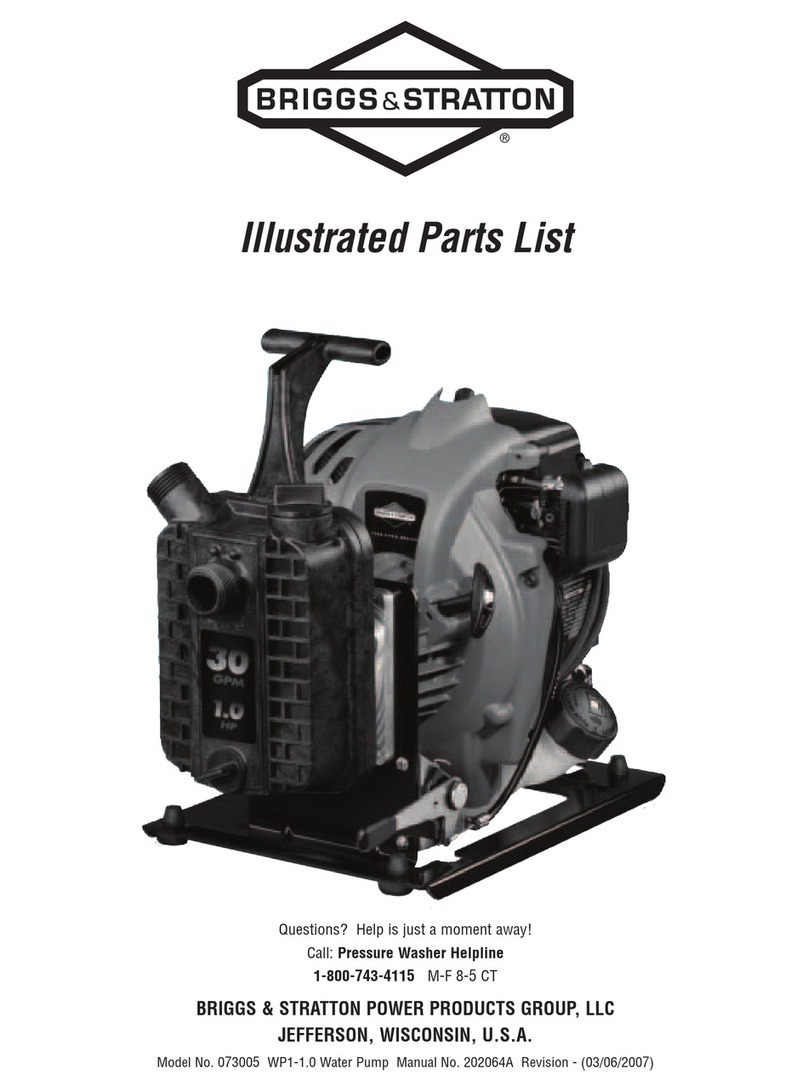
Briggs & Stratton
Briggs & Stratton 73005 Illustrated parts list

salmson
salmson ALTI-AQUA Installation and starting instructions
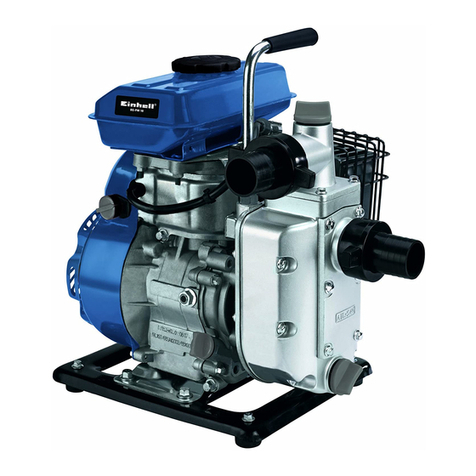
EINHELL
EINHELL BG-PW 18 Original operating instructions

Zoeller
Zoeller 63 installation instructions
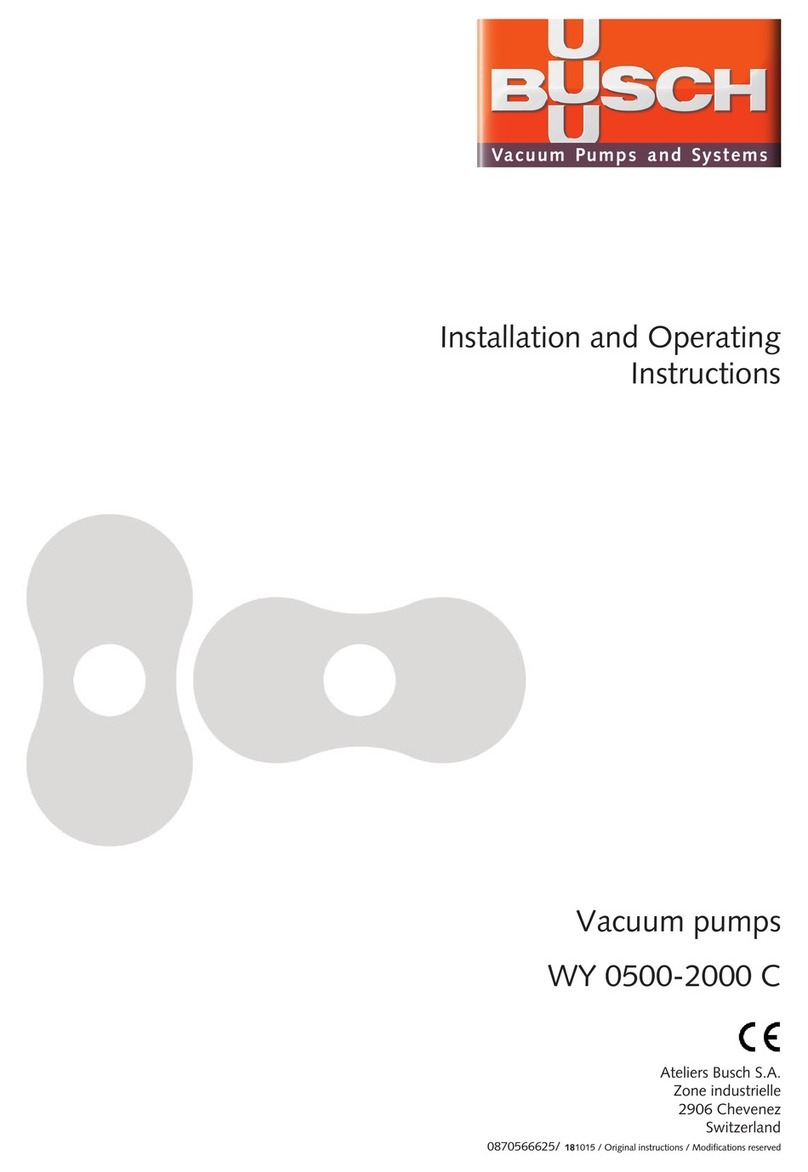
BUSCH
BUSCH WY 0500-2000 C Installation and operating instructions
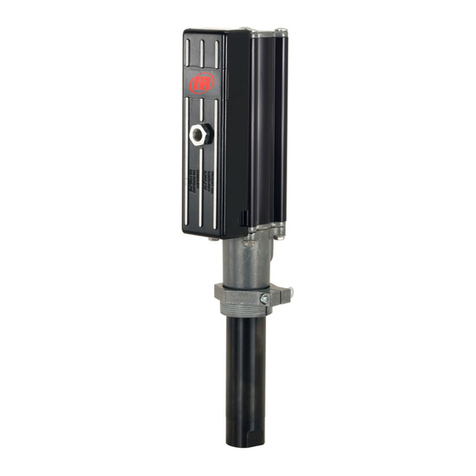
Ingersoll-Rand
Ingersoll-Rand ARO THUNDER Series Operator's manual

KSB
KSB RPH Installation & operating manual
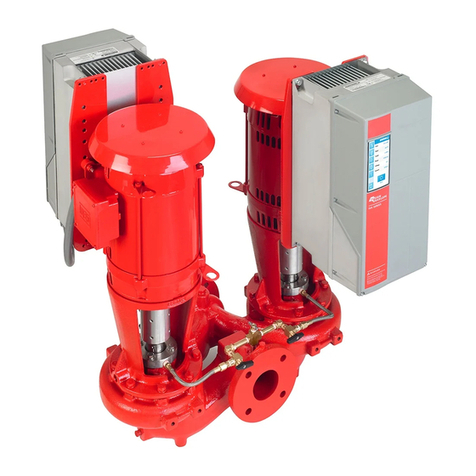
Armstrong
Armstrong Design Envelope 4312 Installation and operating instructions

AMT
AMT 490B-98 manual
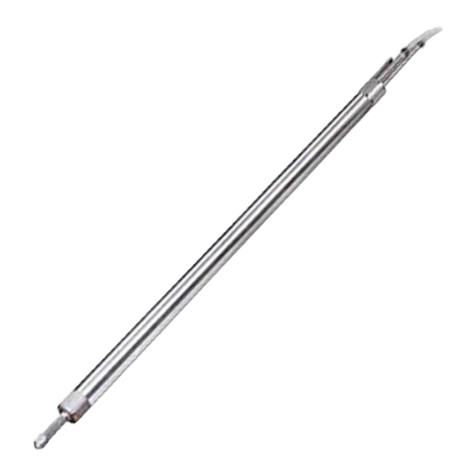
Solinst
Solinst 407 SS manual

